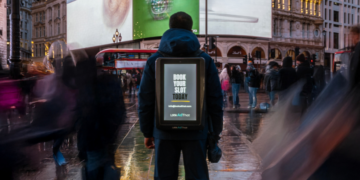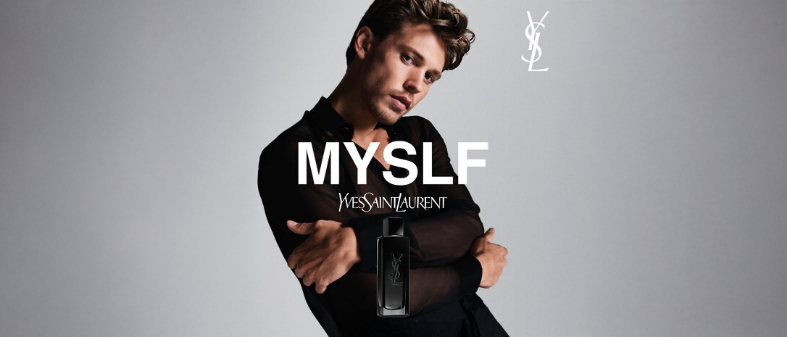What do you do when you’re fifteen and the world feels like it’s ending? When you’re navigating climate collapse, coming out as queer, and battling depression all at once? If you’re Elijah McKenzie-Jackson, you skip school to lead England’s largest climate protest in history. Then, six years later, you write a book about it.
“Blue,” published by Olympia Publishers on July 10, is McKenzie-Jackson’s answer to what he calls “overlapping emergencies”—the convergence of personal and planetary crises that define growing up in the 21st century. Now 21 and based in Hollywood, the British artist and activist has channeled years of grief, defiance, and hope into a literary debut that’s equal parts memoir, manifesto, and survival guide.
McKenzie-Jackson, who goes by EMJ, has spent the last six years redefining what activism looks like for his generation. He’s the co-founder of WaicUp.org, a queer-led nonprofit that’s mobilized over 3.2 million young people through creative campaigns across Europe and the United States. But his journey started much smaller, in East London’s quiet corners with two mums and a growing sense that the world wasn’t built for people like him.
“I began writing Blue because, at 15, when I led the School Strike for Climate movement in the UK, I was searching for more than protest—I was searching for language that could hold the weight of what I was feeling,” McKenzie-Jackson explains. “The grief of a dying planet. The isolation of growing up queer in a world that treats both nature and difference as disposable.”
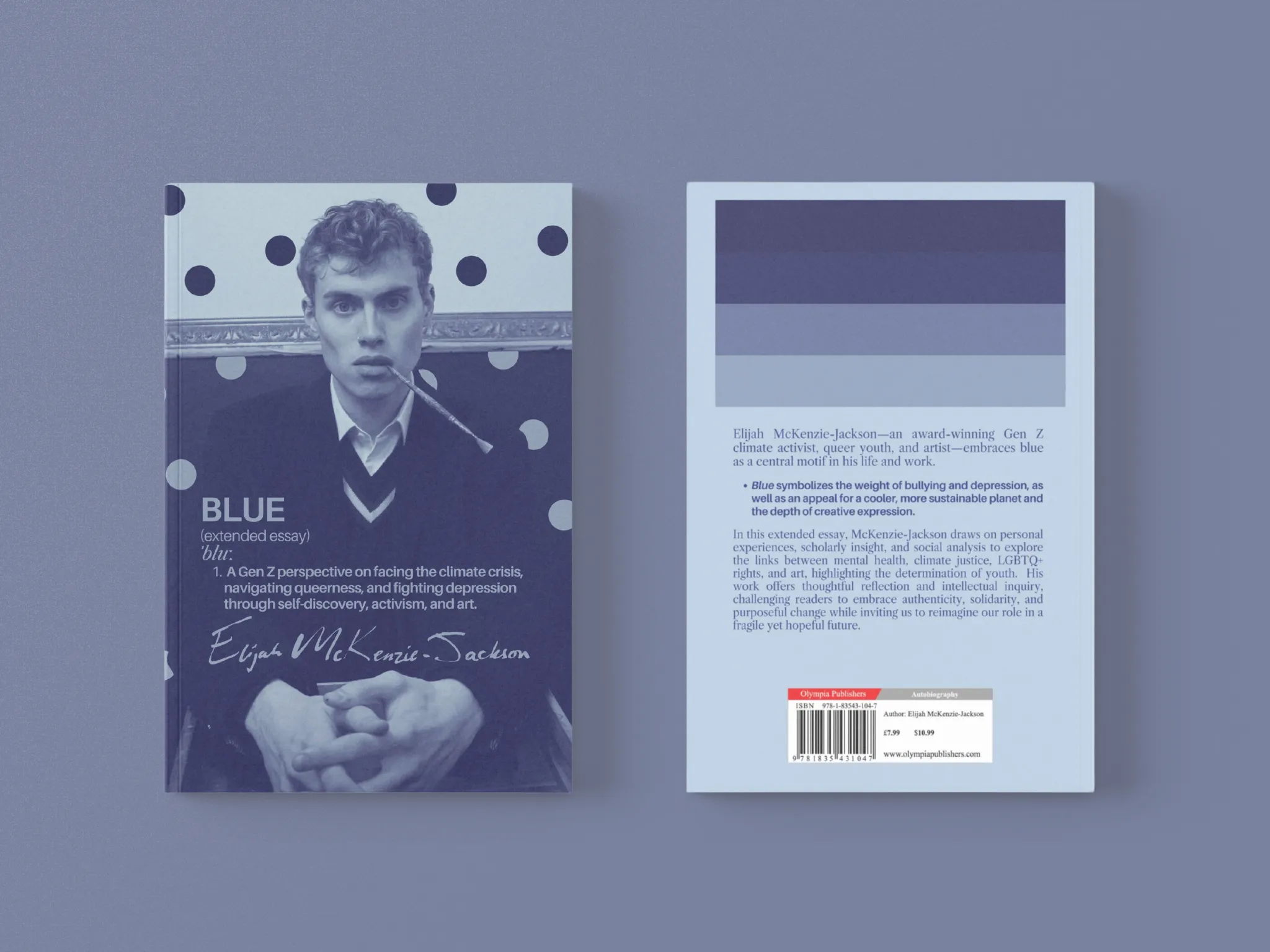
The book centers around blue as both metaphor and mission. For McKenzie-Jackson, blue represents “the weight of bullying and depression, as well as an appeal for a cooler, more sustainable planet and the depth of creative expression.” It’s a color that’s followed him from his darkest moments—”Waking up was a win,” he writes about his experience with depression—to his brightest achievements on global stages.
What sets Elijah McKenzie-Jackson apart isn’t just his activism, but his approach to it. He’s coined the term “artivism”—the fusion of art and activism that uses creative expression as a tool for social and political change. This isn’t abstract theory for him; it’s lived practice. At the 2024 Clinton Global Initiative, he live-drew President Biden, Prince Harry, and Dr. Jane Goodall, bringing youth perspectives through art to an audience of over 150,000.
His most striking piece might be “There’s No Place Like Home…”—a 17,270-crystal megaphone handcrafted over 65 hours that debuted on Times Square billboards during the New Year’s Eve ball drop. Valued at $15,000, it’s recognized as the world’s most expensive megaphone sculpture, centering voices of children, activists, and displaced people through an interactive sound installation.
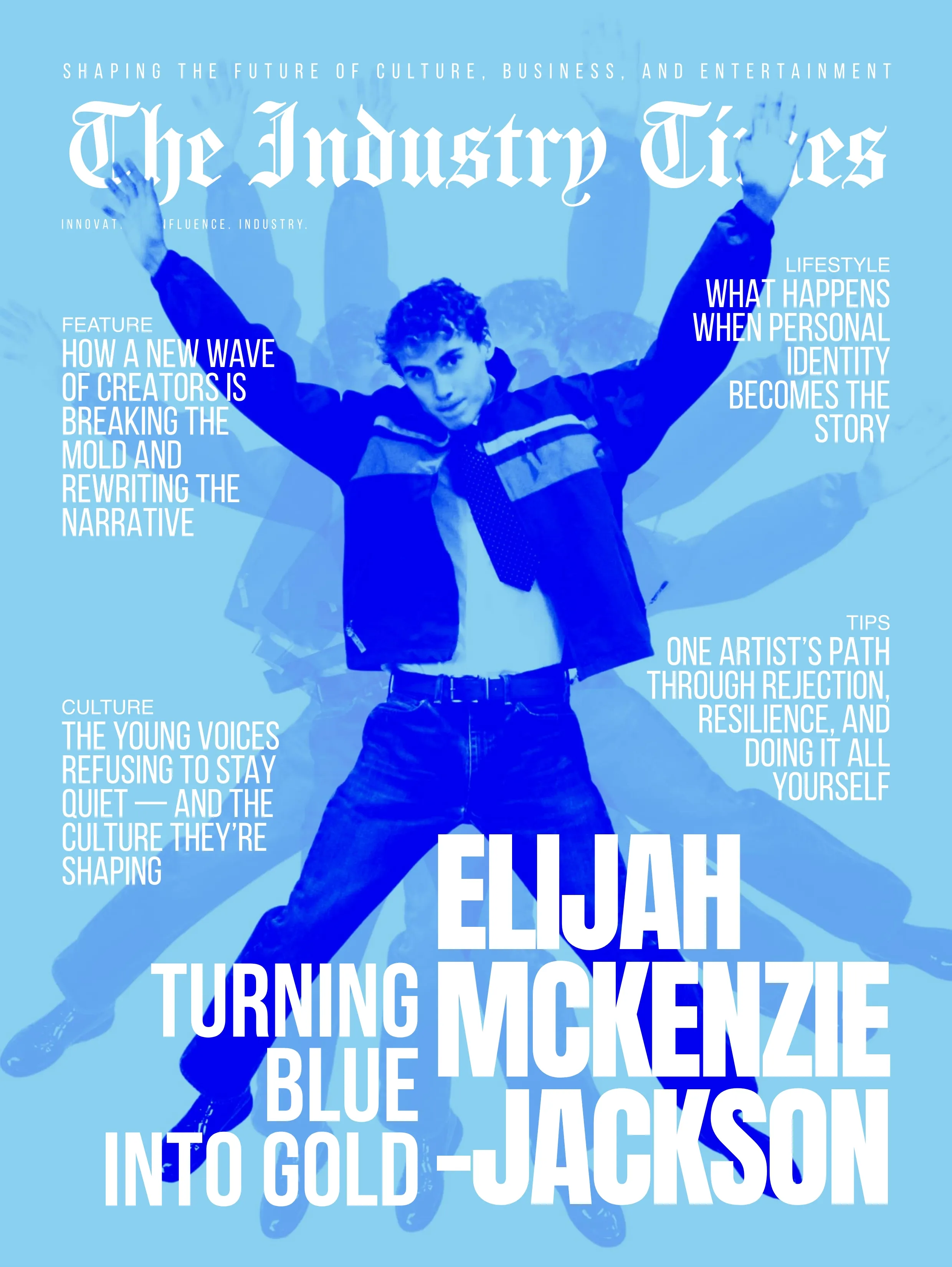
But McKenzie-Jackson’s influence extends beyond individual artworks. In 2019, that climate protest he organized mobilized 100,000 people and catalyzed youth-led demonstrations across Europe, culminating in his address to the EU Parliament and House of Lords. At COP27 in 2022, he collaborated with the UN Secretary-General to advocate for LGBTQ+ refugee rights and inclusive climate displacement policies—marking the first time queer communities were formally recognized in UN climate consultations.
Growing up in a same-sex-parent family gave McKenzie-Jackson an early understanding of how systemic barriers impact marginalized communities. “There is no EARTH without ART,” he declares in Blue, a statement that’s been celebrated by figures like Chelsea Clinton and Greta Thunberg. The book includes his step-by-step guide for creating impactful political art that “disrupts, communicates, and inspires change.”

His social media showcases this philosophy in action, documenting a career that’s already included features in Business Insider, British Vogue, Teen Vogue, and The New York Times.
“I want my work to provoke. To poke holes in silence,” McKenzie-Jackson says about his artistic mission. “Whether it’s through art or the written word, I hope it offends apathy, challenges comfort, and moves people to feel something raw.”
The book blends personal narrative with scholarly research, exploring connections between mental health, climate justice, and LGBTQ+ rights. “We are the authors of this planet’s story, with the power to push it to the edge of destruction—or heal it to its full potential,” he writes, capturing the urgency that drives his generation.
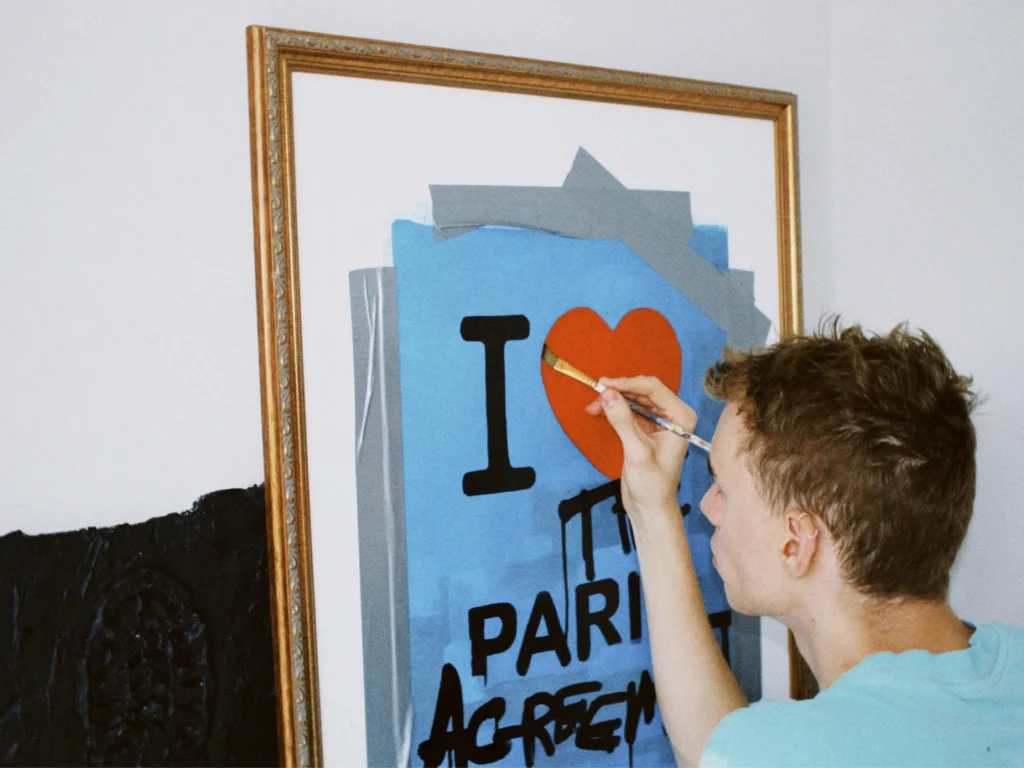
Looking ahead, McKenzie-Jackson is working on a new art collection set to launch in early 2026, which he describes as his “boldest project yet. Less about protest, more about worldbuilding.” It’s fitting for someone who’s spent his career reimagining what’s possible when art meets activism.
For a generation that inherited multiple crises simultaneously, Blue offers something rare: not false comfort, but genuine response. For now, it stands as both arrival and departure—a book that captures where McKenzie-Jackson has been while pointing toward where he’s headed. In redefining what activism looks like for his generation, he’s proven that sometimes the most radical act is simply refusing to choose between art and action, between feeling and fighting. Sometimes, the answer is just to do both.
You can follow McKenzie-Jackson’s work on Instagram, TikTok, and his website, or learn more about his background on Wikipedia.
For media inquiries, contact Alex Young at info@emj.earth.


